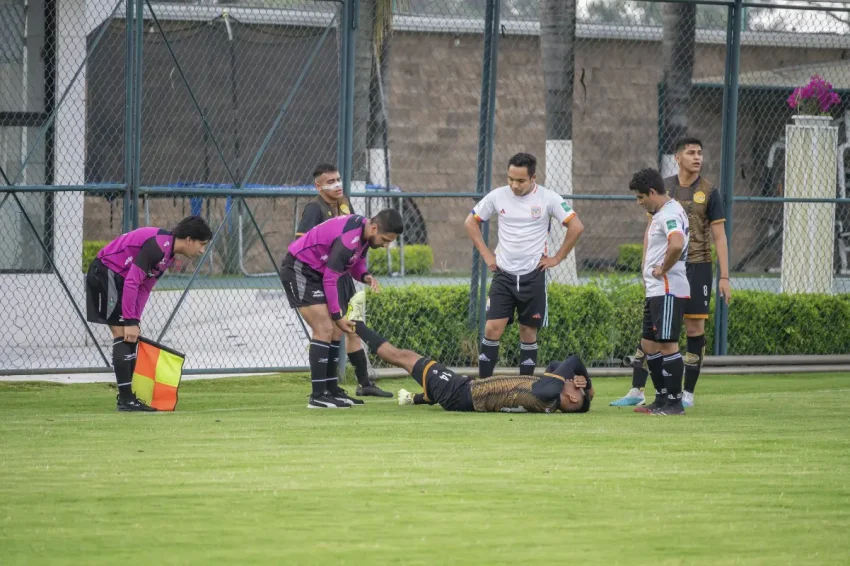4 Tips for Athletes to Manage Recurrent Musculoskeletal Pain

There’s a lot more to being an athlete than what is shown on highlight reels and Instagram. The grind is real and so is musculoskeletal pain.
Whether it’s in the knees, shoulders, or lower back, recurrent musculoskeletal pain is common among active folks. These pains are a common cause of poor performance and loss of competition in athletes. Repetition of movements and awkward postures are the main culprits.
While a full-service chiropractor can definitely help with adjustments and soft tissue work, managing recurrent pain goes way beyond one appointment.
So, if you’re tired of dealing with recurrent musculoskeletal aches, here are a few tips that can help you manage them.
Contents
#1 Follow the RICE Method for Immediate Pain Relief
When an old injury flares up and pain suddenly spikes, the RICE method has long been the go-to first-aid approach.
RICE stands for rest, ice, compression, and elevation. It offers immediate relief from pain and promotes healing.
When you feel that familiar twinge, stop everything and rest. Take a break from activities that aggravate the pain.
Ice in this protocol is shorthand for cooling therapy. Applying an ice pack several times a day, especially within the first 48 to 72 hours, can help numb the pain and may reduce swelling.
Don’t apply it directly, however. WebMD advises covering the ice pack with a light, absorbent towel to prevent frostbite.
Compression—wrapping the injured area—can help control swelling. An elastic bandage or compression sleeve can do the trick. However, don’t wrap it so tight that your limb goes numb.
Elevation helps drain fluid from the area. So, prop up the injured limb on a pillow, ideally above the level of the heart, to minimize swelling.
The RICE method is not going to fix the deeper issue, but it will control the flare-up.
#2 Add Strength And Conditioning Exercises to Your Routine
A lot of times, people think that strength and conditioning are for building bigger muscles or lifting heavier weights. That is true, but they also make muscles and joints more resilient.
Strength and conditioning training create a musculoskeletal system that can better withstand the stresses of sport and daily life. That reduces the likelihood of pain flare-ups.
A big reason why your muscles and joints keep hurting is due to muscle imbalances, where some muscles are overworking while others are underactive. Joint instability is another reason.
Physiopedia notes that proper strength and conditioning can strengthen supporting muscles, increase mobility, stabilize joints, and enhance coordination and peripheral skills.
Squats, reverse lunges, Bulgarian squats, glute bridges, and push-ups are some simple strength and conditioning exercises you can add to your daily routine.
However, do it only under the guidance of a physical therapist or certified strength coach. That is because proper form is important. Executing exercises with incorrect techniques can aggravate the pain or lead to new injuries.
#3 Explore Alternative Therapies
If the usual rest and rehab cycle isn’t helping, it might be time to explore other avenues of relief.
Alternative therapies can be really helpful alongside conventional treatments to manage stubborn pain and improve overall function.
Massage therapy, for instance, can help ease muscle tension, break down adhesions, improve circulation, and promote relaxation. This can help with recovery and reduce that persistent, tight, achy feeling.
Acupuncture and dry needling also help reduce pain and promote muscle relaxation.
For chronic back or neck pain, chiropractic care can make a difference. Don’t just go to any random practitioner. Seek practitioners who are licensed as well as certified. They must also have specific experience working with athletes and managing recurrent pain conditions.
Before starting the treatment, Governor’s Park Chiropractic advises discussing your health history as well as concerns with the professional. Also, make sure to adhere to aftercare instructions offered by the chiropractor.
#4 Don’t Skip the Recovery Staples
Targeted treatments and therapies play a role. But the real secret to keeping that muscle and joint pain away often comes down to daily habits.
Don’t ignore the recovery basics—sleep, proper nutrition, and hydration.
Sleep is the most powerful recovery tool. During deep sleep, the body repairs damaged muscle tissue, releases growth hormones, and calms inflammation.
If you skimp on sleep, your pain perception can heighten, and recovery processes can slow down. So, aim for a consistent seven to nine hours of quality sleep.
Fuel up right. Consuming a diet rich in anti-inflammatory foods, such as berries, leafy greens, and fatty fish, can help manage pain from the inside out. Take adequate protein throughout the day, from sources like lean meats.
Muscles cramp and joints get stiff when you’re dehydrated. Drink more water than you think you need, especially if you’re training hard.
Recurrent pain can feel like a huge setback, especially when you’re passionate about your sport.
However, it’s important to understand that this isn’t a sign of a damaged body. It’s rather an indication that something needs attention, adjustment, or support. So, follow these tips and you’ll feel better and enjoy your athletic pursuits.



